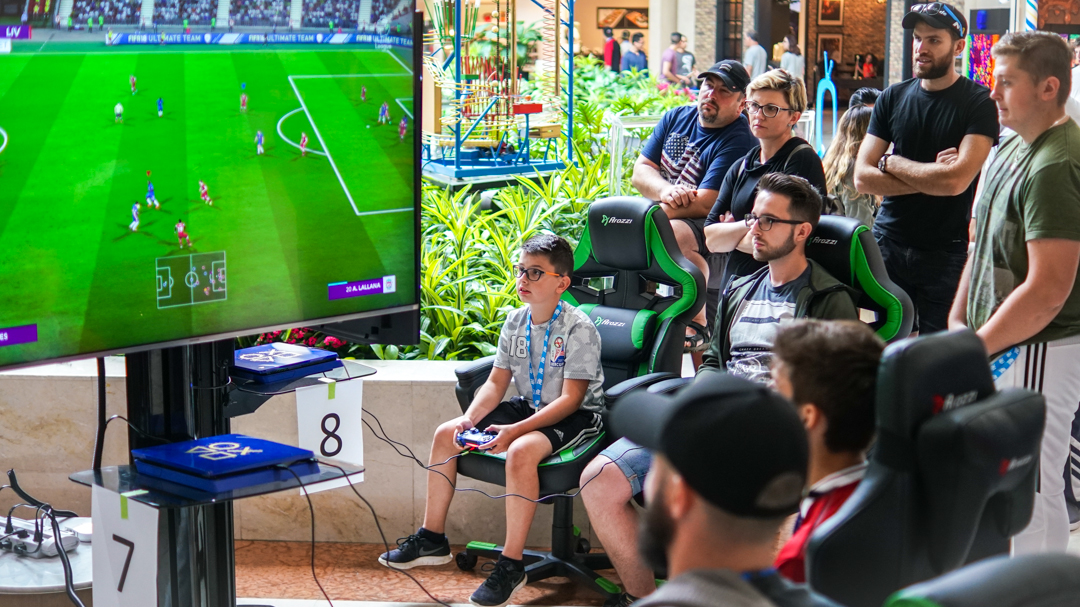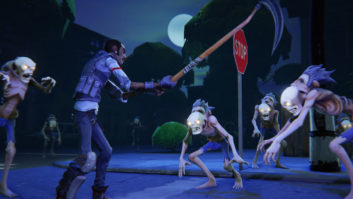Few consumer tech categories change quite as rapidly as video games.
New gaming consoles hit store shelves every five to eight years, while other ways to play emerge at an even faster pace, thanks to mobile devices, virtual and augmented reality headsets, and new player interfaces.
This all makes things more challenging than ever for game retailers.
Not long ago, brick-and-mortar stores battled each other for customers. GameStop was the hub for enthusiasts. Walmart lured in mainstream players. And Toys“R”Us was the go-to spot for parents.
Related: Free Webinar: Using eSports To Transform Tech Retailing
In 2018, though, Toys“R”Us is a memory. And the publisher partners of retailers who have survived are also often the biggest competitor. Today’s players can buy new AAA game releases directly on their PlayStation, Xbox or Switch.
The industry has once again reinvented itself. And to face that challenge, retailers are changing as well.
For GameStop, the leading video game retailer, that means an even stronger embrace of the culture of video games and the people who play them. The company’s 6,100-plus locations are a safe haven for players to express themselves and their love for their hobby.
“Our stores have become the local place for consumers to show their passion,” said Eric Bright, merchandising VP at GameStop.
Watch: Sony Finally Making Cross-Play Available on PS4
Take the recent launch of “Spider-Man” for the PlayStation 4. While many players downloaded the game upon its release, especially enthusiastic fans flooded GameStop locations dressed as the friendly neighborhood hero. That made the launch an event — like the midnight game launches of years gone by, when gamers would camp outside of the Time Square Toys“R”Us for the launch of “Halo 2” or the debut of the Nintendo Wii (an event that drew more than 3,000 people at midnight on Nov. 18, 2006).
Buying at retail comes with another set of advantages as well, thanks to the long-term relationships between retailers and publishers. Fans who ventured out to buy “Spider-Man” at GameStop could also pick up a collector’s box of the game as well as additional in-game costumes and an unlockable game mission.
Certainly, there’s no denying that digital sales are a growing force in game retail. In 2010, subscriptions, full digital downloads, digital add-ons and mobile apps made up just 31 percent of overall game purchasing. In 2017, they made up 79 percent of the market.
Some fatalists point to those numbers as proof of the impending doom of brick-and-mortar game retailers. But numbers don’t always tell the whole story. App spending, for instance, has risen dramatically in recent years, which inflates that percentage. And that’s an area that doesn’t necessarily impact the bottom line of game retailers.
See also: The Newest Gaming Accessories On The Way
There’s also a truism the bears fail to take into account: Not all gamers have a credit card (and many who do are hesitant to hand it over to a console maker). That presents an opportunity for retailers, who can offer digital downloads with a different payment method.
“The majority of digital transactions are being paid for in cash,” said Bright. “As you are seeing digital popularity rise, you are uncovering more consumers who are uncomfortable with [using] — or don’t have access to — credit cards. Their option is to find an alternate method of engaging in a digital ecosystem and that’s where retail excels.”
Bright noted that GameStop sees $1 billion in digital sales annually.
Even digital sales could face an evolution in the years to come, though. Game companies are in the midst of moving to a streaming and subscription model, much like Netflix and Hulu.

The technology is already being tested. Sony’s PlayStation Now gives players instant access to a library of 650 games (mostly older, catalog titles) for $99 per year. And Electronic Arts showed a prototype of its own proprietary service in June at E3, the video game industry’s annual trade show, saying it had the same price point in mind.
It’s a technology game publishers are especially excited about, but even they acknowledged it won’t be an immediate paradigm shift.
“I read a statistic that 40 percent of the world’s music is sold on compact disc,” said Andrew Wilson, CEO of Electronic Arts. “That’s probably not going to happen where you and I live … but there are parts of the world where, for any number of reason — socio-economic status, digital economy, broadband access — buying the hardgood version is still the preferred version. … I would say for the next few years, hard goods will continue to be a part of that [for gaming as well].”
That gives tech retailers time to prepare. Game companies are still splintered when it comes to subscription models. And, just as consumers are growing weary of requiring subscriptions to Netflix, Hulu and Amazon Prime to watch all they want, they’re unlikely to subscribe to several publisher accounts. This creates an opportunity.
Publicly, no brick-and-mortar game retailer has announced plans to create a streaming service. But GameStop, at least, isn’t ruling it out.
See also: eSports 2.0 Has Arrived
“GameStop continues to look at what services our consumers are interested in,” said Bright. “If consumers demand a Netflix-like service, GameStop will look at those particular avenues. We are one of the most agile game retailers in the marketplace. As consumers shift their preferences, GameStop will shift accordingly.”
And, even if the game streaming model takes off, not every publisher is rushing to embrace it. Some say they vastly prefer the current retail model, since they believe it results in higher revenues.
“I think there’s still a role for the highest quality products sold at a premium price,” said Strauss Zelnick, CEO of Take-Two Interactive Software. “I don’t think that goes away. None of the other business models would enable us to make that quality of product.”
Regardless of whether game streaming takes off or digital downloads continue to grow, brick-and-mortar stores will always have one advantage over their online competitors: Human interaction.
Artificial intelligence can take a guess at suggesting a game for you, but it can’t talk to you in depth about your favorite past titles and activities beyond the gaming world to offer something you might not have considered. And during the holidays, it’s knowledgeable clerks who help guide parents and grandparents that don’t know anything about video games to make suitable (and age appropriate) selections for gifts.
The video game industry, after all, might be one that’s deeply steeped in technology. But ultimately, it’s the human element that makes it so popular.









